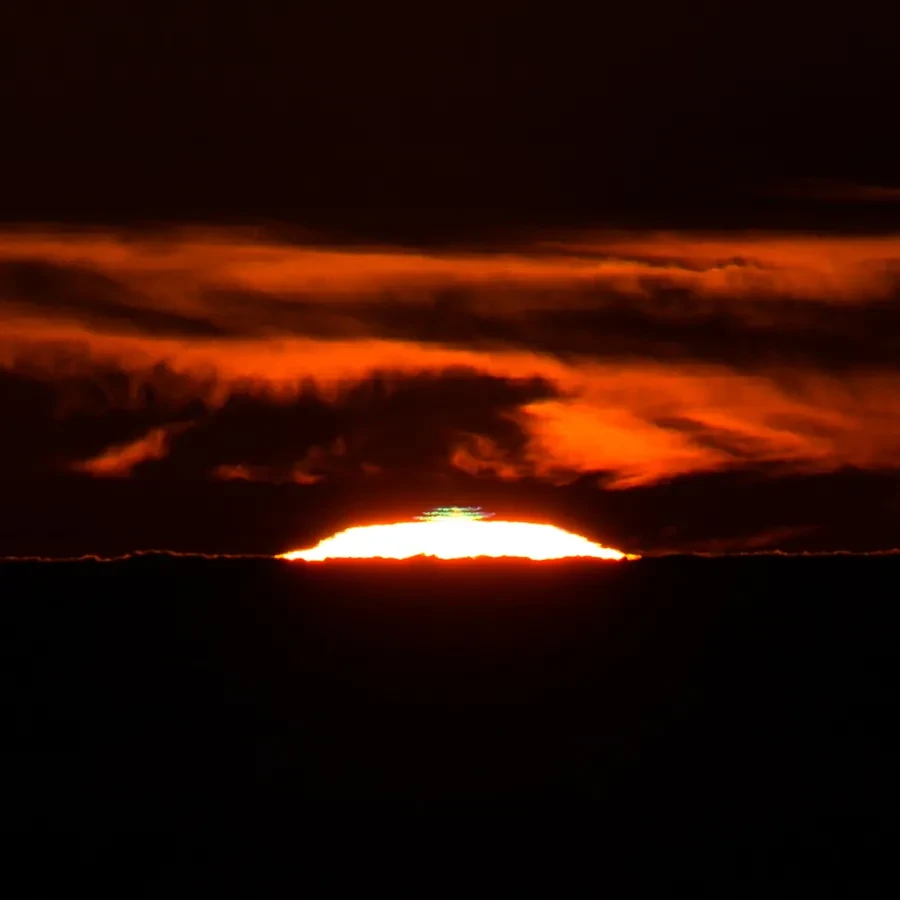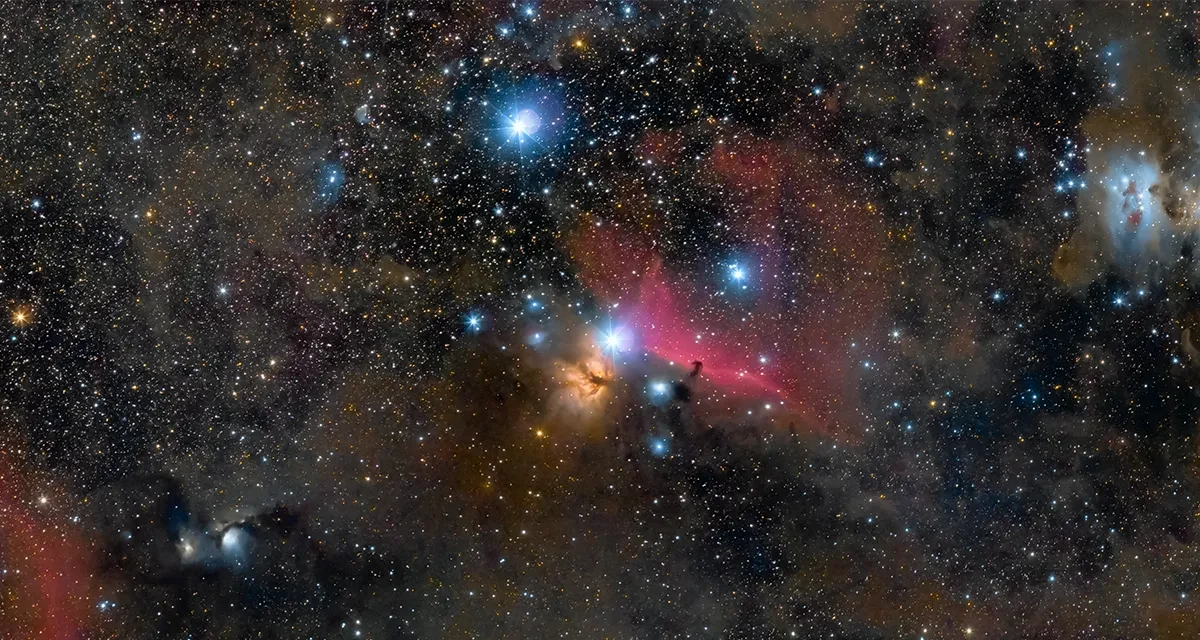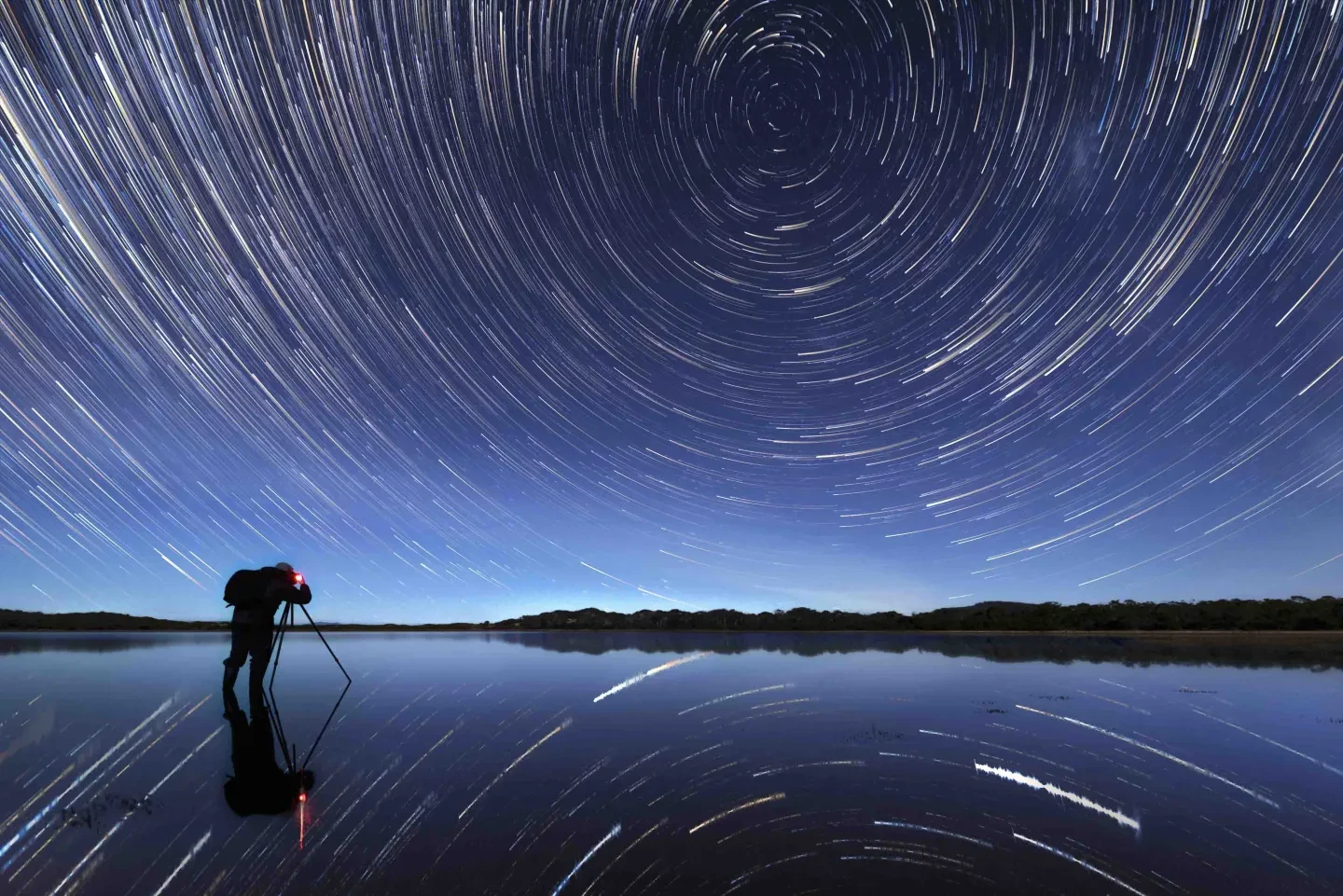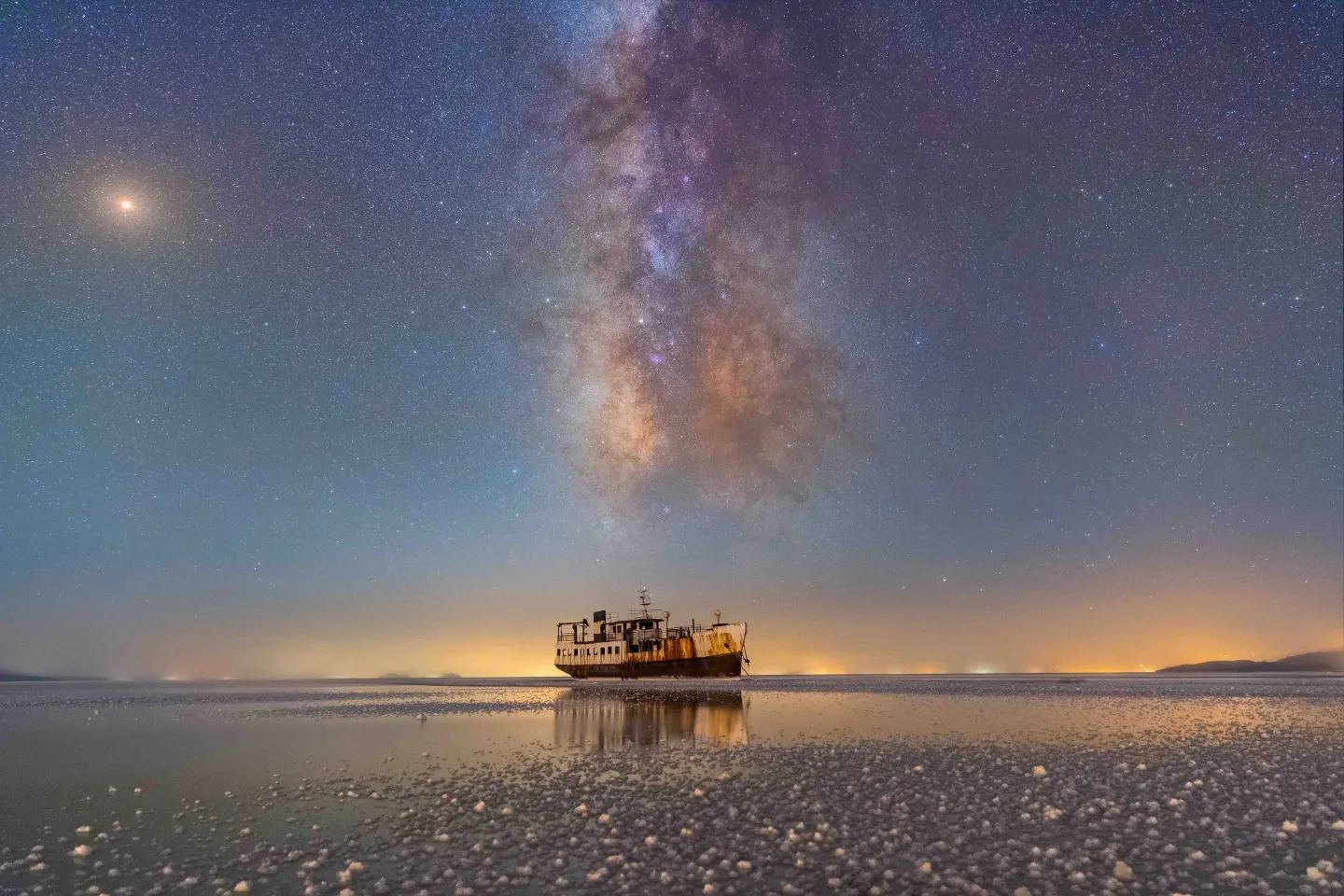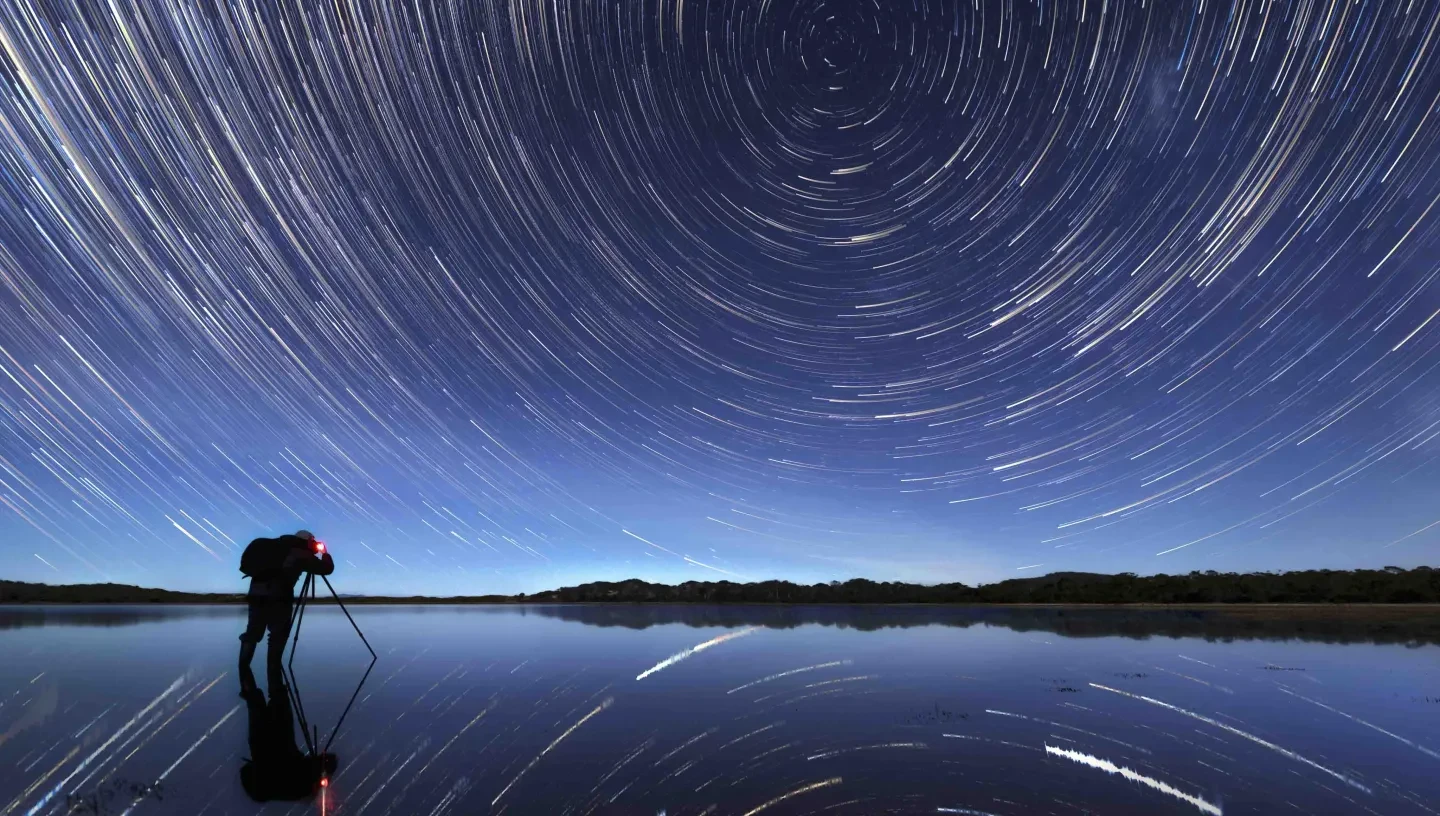
Photographers from Insight Investment Astronomy Photographer of the Year 2019 reveal the cameras, lenses and telescopes they use to capture incredible images of the night sky.
Astrophotography equipment: what you need to get started
Insight Investment Astronomy Photographer of the Year showcases the world's best space photography, from stunning shots of aurorae and skyscapes to images of distant planets and galaxies.
While the skills of the photographers are remarkable, much of the equipment they use is within the grasp of beginners who are just starting to get into astrophotography.
The guide below reveals the gear used by some of the best astronomy photographers in the world, giving you a sense of what to look for when shopping for cameras and accessories.
Cameras
DSLR (digital single-lens reflex) or mirrorless cameras are a must for great astrophotography. The ability to open the shutter for extended periods enables photographers to take in as much light as possible in a dark night scene and capture faint or faraway objects.
The flexibility of DSLRs make them ideal purchases for a number of fields of photography including astrophotography, and their technical qualities allow for a huge variety of compositions.
Most camera deals include at least one 'kit lens' along with the camera body, and some bundles offer the opportunity to purchase even more. Knowing the brand of camera you want to start with therefore is very important, as any future lens you purchase will have to be compatible.
For specific models used by our award-winning photographers, see the list below.
Canon
“My camera body is a Canon 6D, whose sensor performs great under low light conditions,” says Our Sun 2019 photographer Juan Carlos Munoz. See the results of this low light performance in his image of the setting Sun below, featuring a rare ‘triple green flash’.
An alternative budget option for those getting started is the Canon 450D used by Best Newcomer 2019 photographer Ross Clark. He says he used what he calls this “pretty average” camera after modifying it for astrophotography himself using an online guide.
“All my equipment for my entry was second hand and by no means top of the range,” he says. See the results below.
Nikon
“I use a combination of Nikon and Canon full frame DLSRs,” says People and Space photographer James Stone. “My Nikon D750 is my go-to camera body.” See his photo 'Cosmic Plughole’ taken with his Nikon camera below.
Kevin Palmer also says that he uses the Nikon D750, while Marcin Zając says he takes a D600 with him for his images.
Sony
A number of photographers in the competition said that they used Sony cameras for their images.
“I use a Sony Alpha 7S for night-time photos, given the great hold at high ISO,” says People and Space photographer Alessandro Cantarelli.
Skyscapes 2019 entrant Stefan Liebermann also suggested looking at the Sony Alpha 7S as well as the Sony Alpha 7 III. As opposed to most of the DSLR cameras above, both these models are mirrorless cameras, which are typically smaller than their DSLR equivalents.
See the People and Space 2019 winner Ben Floyd talk about how he captured his winning image
Lenses
Just like with other fields of photography, once you have a camera that can take interchangeable lenses, the types of astrophotographs you can take expands enormously. As long as you know that your lens is compatible with your camera body, the potential to experiment is endless.
Here are just a few lenses used by photographers in Insight Investment Astronomy Photographer of the Year 2019.
“If you are going to invest anywhere, invest in good glass,” recommends photographer Ross Clark, “as this is what is collecting the light to focus on the camera sensor.”
Clark used a Canon EF L 70-200m f/2.8 for his 2019 entry.
Juan Carlos Munoz has a number of suggestions for budding astrophotographers: “My two main astrophotography lenses are the Rokinon/Samyang 14mm f/2.8 and 24 mm f/1.4, which collect a lot of light over a large field of view.
“I also use a Tamron 45 mm f/1.8 when I want to get tighter compositions, and a Tamron 100-400 mm for zoomed-in views of the Sun and the Moon. Finally, my all-purpose workhorse lens is a Canon 24-105 mm.”
Stefan Liebermann says he prefers the perspective afforded by wide angle lenses such as the Sigma 144 1.8 in order “to capture the night sky in combination with the landscape.”
Masoud Ghadiri says his lens bag also includes a Sigma 14mm F1.8, as well as a Nikon 24-70mm E VR and Nikon 70-200mm E FL.
James Stone however keeps his recommendation a little simpler, saying that he “loves” shooting with his 50mm prime lens. Whichever camera you choose will have one of these standard lens available. Unlike zoom lenses, the 50mm is fixed and is similar to the perspective of the human eye.
Found your perfect gear? Time to give it a go! Learn how to take photographs of meteor showers
Tripods
A solid stand for your camera ensures pin-sharp shots of the night sky.
However, as can be seen from the images in the competition, astrophotography can also take you to some pretty inaccessible places.
Marrying stability with mobility can come at a price when it comes to tripods. Here are just some of the suggestions from our 2019 photographers.
Sirui T-025X
Juan Carlos Munoz uses this lightweight, foldable travel tripod, which can collapse to a height of just 30cm.
Jason Perry also says he uses a tripod from brand Sirui, combined with a ball head from Manfrotto. Often ball head mounts are included with the tripod as standard, but some photographers choose to combine different mounts to suit their needs and the size of their setup.
Gitzo Traveler
Masoud Ghadari says that this tripod and ball head is his preferred platform for taking astrophotographs.
“I walk more than 10km sometimes to find a suitable location for photography,” he says. “Due to this, weight is very important for me.”
Telescopes and star trackers
Many incredible shots of the night sky can be captured without the need for a telescope. However, if you want to look deeper into the universe, a good telescope will take you there.
The Royal Museums Greenwich shop offers a number of beginner telescopes recommended by Royal Observatory astronomers.
Star trackers meanwhile are specialised devices that are the secret weapon of many astrophotographers.
The rotation of the Earth means that the longer the shutter speed, the more blurred the night sky will appear in the final shot.
However, star trackers (also known as equatorial mounts) slowly rotate at the same speed as the Earth, only in the opposite direction. It means that photographers are able to automatically track objects as they move across the night sky.
This can be an advanced process, especially when trying to capture both the landscape below and the night sky above. Many of the images in Insight Astronomer Photographer of the Year combine multiple exposures to produce the final, breathtaking effect.
However, if you want to take your astrophotography to the next level, both telescopes and star trackers could be the answer.
Here is just some of the equipment used by the shortlisted photographers.
Star trackers
Sky-Watcher Star Adventurer This equatorial mount can be attached to any standard tripod head according to photographer Ross Clark.
iOptron Skytracker Kevin Palmer says he sometimes uses this mount for his tripod.
Vixen Polarie Masoud Ghadiri explains that he changed from the Sky Watcher Star Adventurer to this model because he found it more portable. However, make sure you consider the maximum weight of your camera and lens and check this against the star tracker specifications.
How to use a star tracker or equatorial mount
Marcin Zając's photos combine both pin-sharp images of the night sky with dramatic landscapes. His image Big Sur Galaxy was the first time he had used a star tracker. Here's how he did it:
This image was taken on the Big Sur coastline in California earlier this year. Big Sur has been called 'The Greatest Meeting of Land and Water in the world'. Located two hours south of the San Francisco Bay Area this mountainous stretch of the California coast is easily accessible and yet undeveloped and sparsely populated. There is virtually no light pollution here which makes it a perfect destination for night photography. The only source of light apart from the stars was a setting crescent moon and the occasional lights of a car driving on the Pacific Coast Highway.
This was my first time using an equatorial mount (known commonly as a star tracker). Rotating at the same speed as the Earth (just in the opposite direction) it enabled me to take 2 minute longer exposures of the sky without any trailing of the stars. I then blended a foreground shot from the same location taken during blue hour to get the final result you see here.
Using a tracker and stacking multiple images lets me achieve more crisp and virtually noise-free result. I process all my images using Adobe Photoshop.
(Main image: Cosmic Plughole © James Stone, People and Space Highly Commended 2019)
